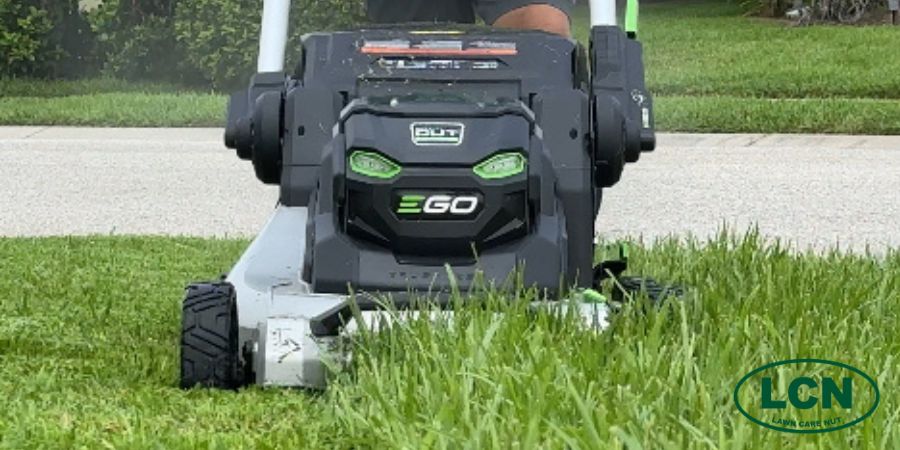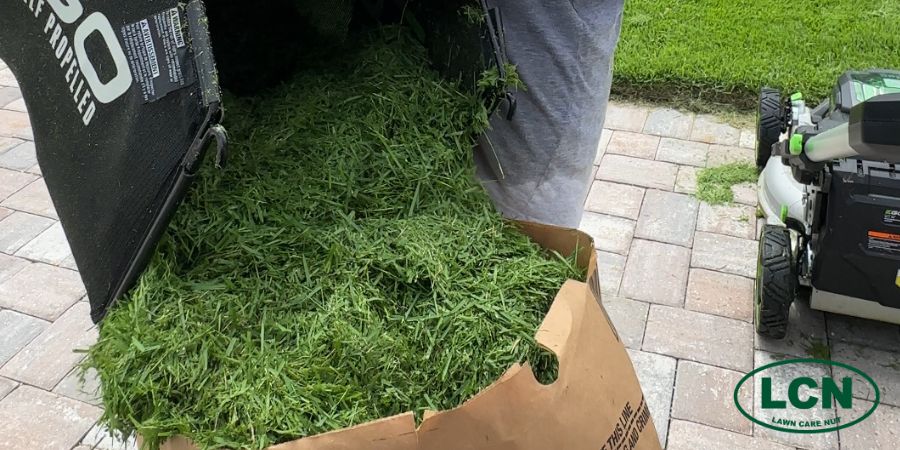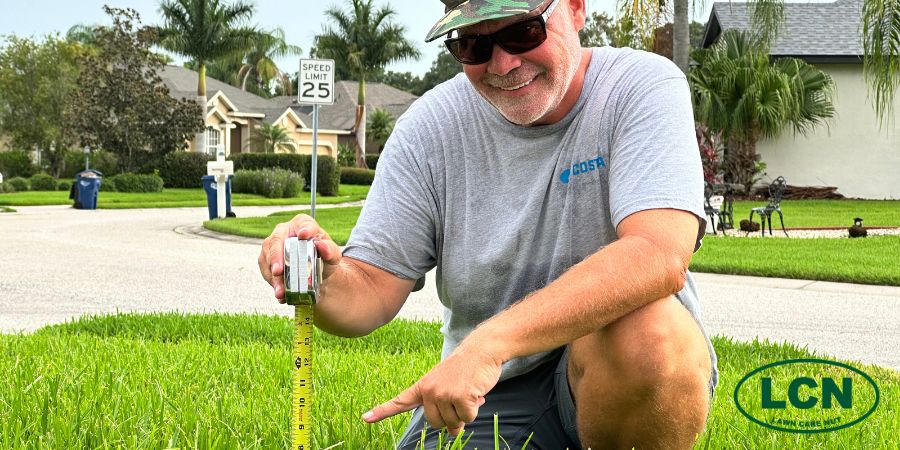How to Mow an Overgrown Lawn
- "The Lawn Care Nut"July 20, 2024
Hey there, lawn lovers! I hope you are enjoying your summer. It’s been an interesting one, for sure!
Here in Florida, now that the rainy season has kicked in, I am mowing every 3-4 days to keep up with my St Augustine and Zoysia lawns.
You all know that I enjoy mowing the lawn. It’s my time to catch up on a good podcast while getting some exercise and vitamin D from the sun! (I always wear sunblock btw). However, this summer I have let it get away from me. In fact, back in mid-June my lawn got so overgrown that it created a HUGE mess for me to deal with. Turns out the mess was much bigger than I had anticipated and it became a real headache for me.
It’s all documented in this video. I pretty much did everything wrong!
Funny enough, right as I published that video, I went on vacation for a week, and when I got back, my lawn was once again overgrown! This time I did it right. I used the bagger on my mower and collected the clippings in refuse bags. I’m fortunate that in my county, we have lawn and landscape waste pickup service every week.
With that, let’s talk about overgrown lawns and why it’s bad to let it happen.
The 1/3rd Rule for Mowing
If you do any amount of searching on YouTube for terms like “how tall to mow my lawn” or “how tall should you mow St Augustine/zoysia” or anything like that, you will for sure encounter me or another one of my fellow Lawn Tubers talking about the 1/3rd rule.
That rule states that you should never remove more than ⅓ of the grass blade length in a single mowing. If you follow that rule and remain consistent with it, you can train almost any grass type to be any height from 1” up to 4” or more.
The reason we want to stick within the ⅓ rule when we mow is so we don’t create unneeded stress to the lawn. This also ensures you won’t be leaving behind clumps when you mow.
Avoid Clumping When Mowing
Most of the time, when I mow, I mulch my clippings, and I recommend that you do, too. And sticking within the ⅓ rule ensures that your mower will be able to mulch up those clippings and distribute them back into the lawn evenly, with no clumping.
However, as you get further and further away from this ⅓ mark, and you get to ⅔ where I was when I mowed a couple weeks ago, that is when the trouble occurs. You can see all the clumping I experienced in the video, and in fact, there was so much there that I wasn’t able to mulch it in, no matter how many times I went over it. The clumps that were there have now settled in, and you can see that these areas are smothering the turf. This happening one time during the season isn’t going to do any long-term damage to the lawn, but allowing this to happen multiple weeks in a row could be pretty bad, depending on your grass type. Clumps of cut grass resting on the lawn will create dead spots as they literally blot out the sun as well as harbor moisture that contributes to the spread of disease.

Mowing Overgrown Lawns Can Cause Stress
The other thing that happens when the lawn gets overgrown, and you are forced to cut off more than you like is general stress to the turf itself. Think about trimming your fingernails. Getting a good trim is great for them, nice and clean! But if you cut too deep, you get into the meat of your fingers, and that can be painful! Go any deeper than that and you could be losing a finger! Dramatic I know, but you get the point! Don’t do that to your lawn! (if you can help it)
That’s why the lawn will look yellow after one of these overgrown mows because it’s showing stress. And the only cure for that stress is a little bit of time with good sunlight and plenty of water. Your lawn can and will recover.
But if you were to do this back to back multiple times, you can imagine that it eventually won’t bounce back as fast and begin taking a turn for the worse. The constant stress to the lawn slows the growth which then allows for weeds to invade.
Disease can also become more prevalent in a stressed lawn. You see, the best cure for disease damage is for the lawn to grow back. Areas get damaged and the lawn overall fills them back in. But if you are continually stressing the lawn by cutting off more than 1/3rd, you’re zapping all the strength from the lawn so it can’t grow back as fast and many times disease damage shows longer and larger.

Bagging Grass
If you do have to mow the lawn when it’s overgrown and break the ⅓ rule, I recommend bagging the clippings and getting rid of them for that one time. This won’t change anything about the lawn being stressed, that’s inevitable, but it will take out the variable of clumping which is half the battle at that point. Put your mower on the top setting and suck up the clippings, good to go!
And that was the big mistake I made back a few weeks ago - I didn’t bag. In fact, at that time, I couldn’t even find the bagger (I think I threw it away) and instead of raking, I tried to mulch everything in by going over it with multiple passes. That was the big mistake!
When I came back the following week, I went ahead and borrowed a bagger and used that. It was a much cleaner mow for sure. Now going forward, since I’ve let it get overgrow twice, it’s really important that it doesn’t happen again!
I don’t have anymore travel planned this summer so I should be good. At the end of the day, I hope by reading this you realize that you’re not the only one who lets the lawn get overgrown sometimes and if you do, follow this advice to make the best of it!
I’ll see you in the lawn!


